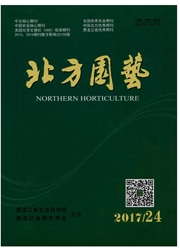

 中文摘要:
中文摘要:
选取3种水生植物水葱、眼子菜、金鱼藻为试材,通过测定其电导率、丙二醛含量、游离脯氨酸含量、可溶性糖含量和可溶性蛋白质含量,探讨3种植物对于以初始总氮(N)浓度为10~10.5mg/L污水胁迫的响应特性。结果表明:植物在受到污水胁迫时通过调节渗透,抑制质膜过氧化以适应污水环境,但不同植物的响应特性存在差异。其中,水葱在受到污水胁迫后游离脯氨酸、可溶性糖含量迅速上升,有效抑制质膜过氧化,耐污染能力优于试验中的其它植物。
 英文摘要:
英文摘要:
Taking three species of aquatic plants Scirpus validus,Potamogeton maackianus and Ceratophyllum demersum as test material,treated by sewage that initial TN contents was 10~10.5 mg/L.Determine the dconductivity,MDA content,free proline,soluble sugar content,soluble protein content at 30,60,90,120 d,the response characteristics of three plants for sewage stress was discussed.The results showed that the plants accommodate the sewage environment by adjusting the penetration and inhibiting the peroxidation of plasma membrane when they confront sewage stress,and there are different response characteristics of different plants.Which,the free proline content and soluble sugar content of Scirpus validus rising rapidly in effective inhibition of the plasma membrane peroxidation to confront the sewage stress,and the resistance to pollution is better than the other plants in the test.
 同期刊论文项目
同期刊论文项目
 同项目期刊论文
同项目期刊论文
 期刊信息
期刊信息
